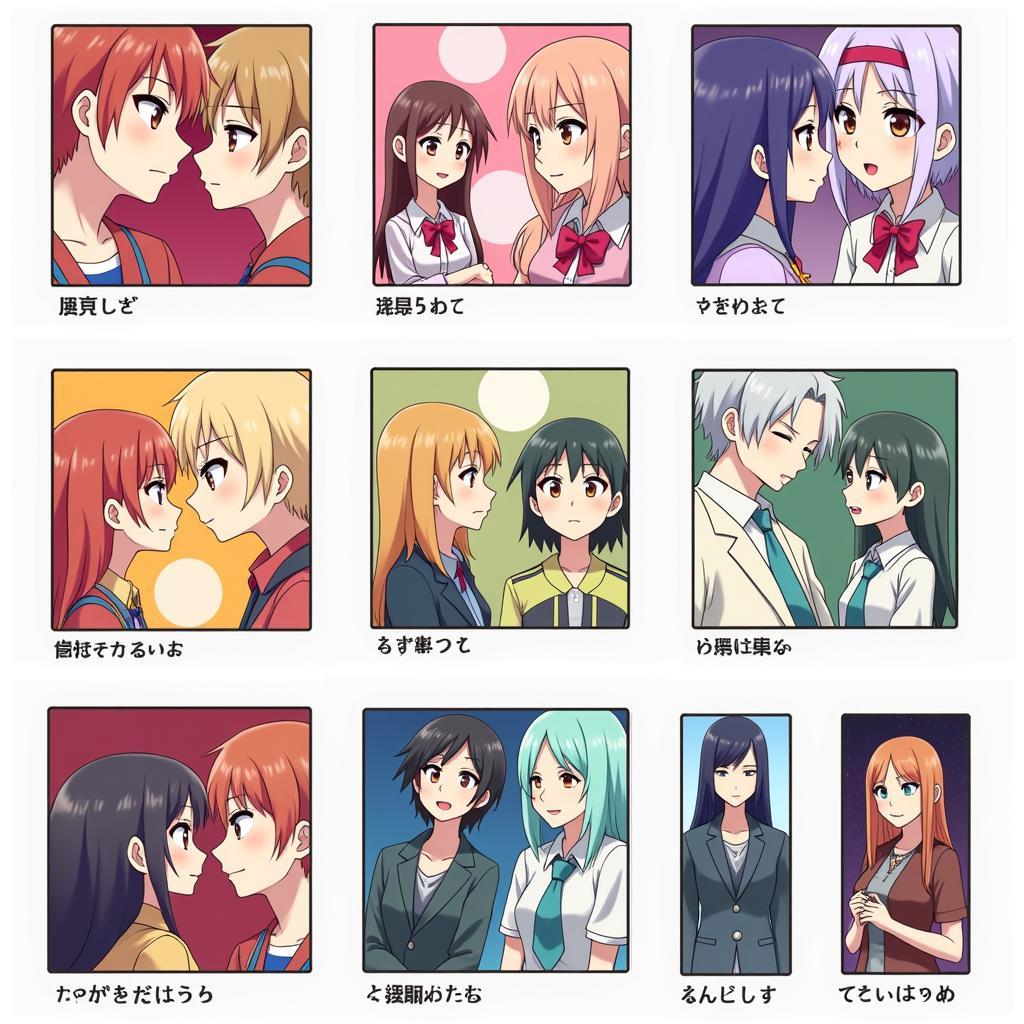Colorizing manga can transform static black and white artwork into vibrant, dynamic pieces. Whether you’re a seasoned artist or a beginner, this guide provides you with the techniques and tools to bring your favorite manga panels to life.
Understanding the Basics of Manga Colorization
Before diving into the technical aspects, it’s essential to understand the fundamentals. Manga colorization isn’t just about adding random colors; it’s about enhancing the story, mood, and characters. Consider the original artwork’s lighting, shading, and composition. Think about how colors can emphasize emotions, create depth, and bring out the details. What atmosphere is the artist trying to convey? Is it a tense action scene or a quiet, introspective moment? Answering these questions will guide your color choices and techniques.
Choosing Your Tools: Software and Hardware
The right tools can make a significant difference in your colorization journey. Several software options cater to different skill levels and budgets. Popular choices include Photoshop, Clip Studio Paint, and GIMP. While Photoshop offers advanced features and extensive control, GIMP provides a free and open-source alternative. Clip Studio Paint is specifically designed for manga and comic creation, offering specialized tools and brushes.
What hardware should you use? A graphics tablet is highly recommended, as it provides more precision and control than a mouse. Choosing the right tablet depends on your budget and preferences. Wacom and XP-Pen offer various models suitable for beginners and professionals.
 Manga Colorization Software Comparison: Photoshop, Clip Studio Paint, and GIMP
Manga Colorization Software Comparison: Photoshop, Clip Studio Paint, and GIMP
Step-by-Step Manga Colorization Process
Here’s a detailed guide to colorizing your favorite manga panels:
- Prepare the Line Art: Clean up the scanned manga page, removing any dust or smudges. Ensure the line art is crisp and well-defined.
- Create Flat Colors: Separate the different elements of the artwork into distinct layers. Apply base colors, also known as flat colors, to each layer. This creates a foundation for your colorization.
- Add Shading and Highlights: Using a darker shade of your base color, add shadows to create depth and dimension. Conversely, apply highlights using a lighter shade to simulate light sources.
- Refine Details: This is where you add finer details like textures, patterns, and special effects. Pay attention to the original artwork and try to replicate the artist’s style.
- Adjust Colors and Contrast: Make final adjustments to the colors and contrast to achieve the desired mood and aesthetic.
How Can I Choose the Right Color Palette for My Manga?
Choosing the right color palette is crucial for setting the mood and atmosphere. Consider the genre and theme of the manga. A romantic manga might benefit from soft pastels, while an action manga could use bolder, more vibrant colors. Look for inspiration in other colored manga, anime adaptations, or even real-world photography.
 Choosing a Color Palette for Manga: Exploring Different Moods and Genres
Choosing a Color Palette for Manga: Exploring Different Moods and Genres
Mastering Advanced Techniques
Once you’re comfortable with the basics, explore more advanced techniques like cell shading, gradients, and blending modes. Cell shading, a popular technique in anime and manga, involves using sharp contrasts between colors to create a stylized look. Gradients and blending modes can add subtle variations and transitions between colors, resulting in a more polished and professional finish.
“Colorization is an art in itself. It requires not only technical skills but also a deep understanding of storytelling and visual communication,” says renowned manga artist and colorist, Kenichi Iwasaki.
Conclusion: Bringing Your Manga to Life with Color
How to colorize manga? It involves a blend of technical skills and artistic intuition. By mastering the fundamentals and exploring advanced techniques, you can transform black and white artwork into vibrant, dynamic pieces that truly capture the spirit of the original manga. Remember, practice is key. The more you experiment with different tools, techniques, and color palettes, the more confident and skilled you’ll become.
FAQ
- What software is best for beginners? GIMP is a great free option.
- Do I need a graphics tablet? A tablet offers more precision, but a mouse can work.
- Where can I find tutorials? YouTube and online art communities are great resources.
- How long does it take to colorize a page? It depends on complexity, but it can take several hours.
- Can I colorize manga commercially? Only if you have permission from the copyright holder.
- What are some common mistakes to avoid? Over-saturating colors and neglecting shading.
- How can I improve my colorization skills? Practice consistently and study the work of other colorists.
“Don’t be afraid to experiment! Find your own style and explore different approaches to colorization,” adds Iwasaki.
Common Situations and Questions
- Situation: Difficulty blending colors smoothly. Solution: Experiment with different blending modes and brush settings in your chosen software.
- Question: How to achieve a specific art style? Answer: Study the work of artists whose style you admire and try to replicate their techniques.
Further Exploration
Explore more about what color is seaglass on our website.
Contact Us
Need help? Contact us at Phone: 0373298888, Email: [email protected] or visit us at 86 Cầu Giấy, Hanoi. We have a 24/7 customer service team.
